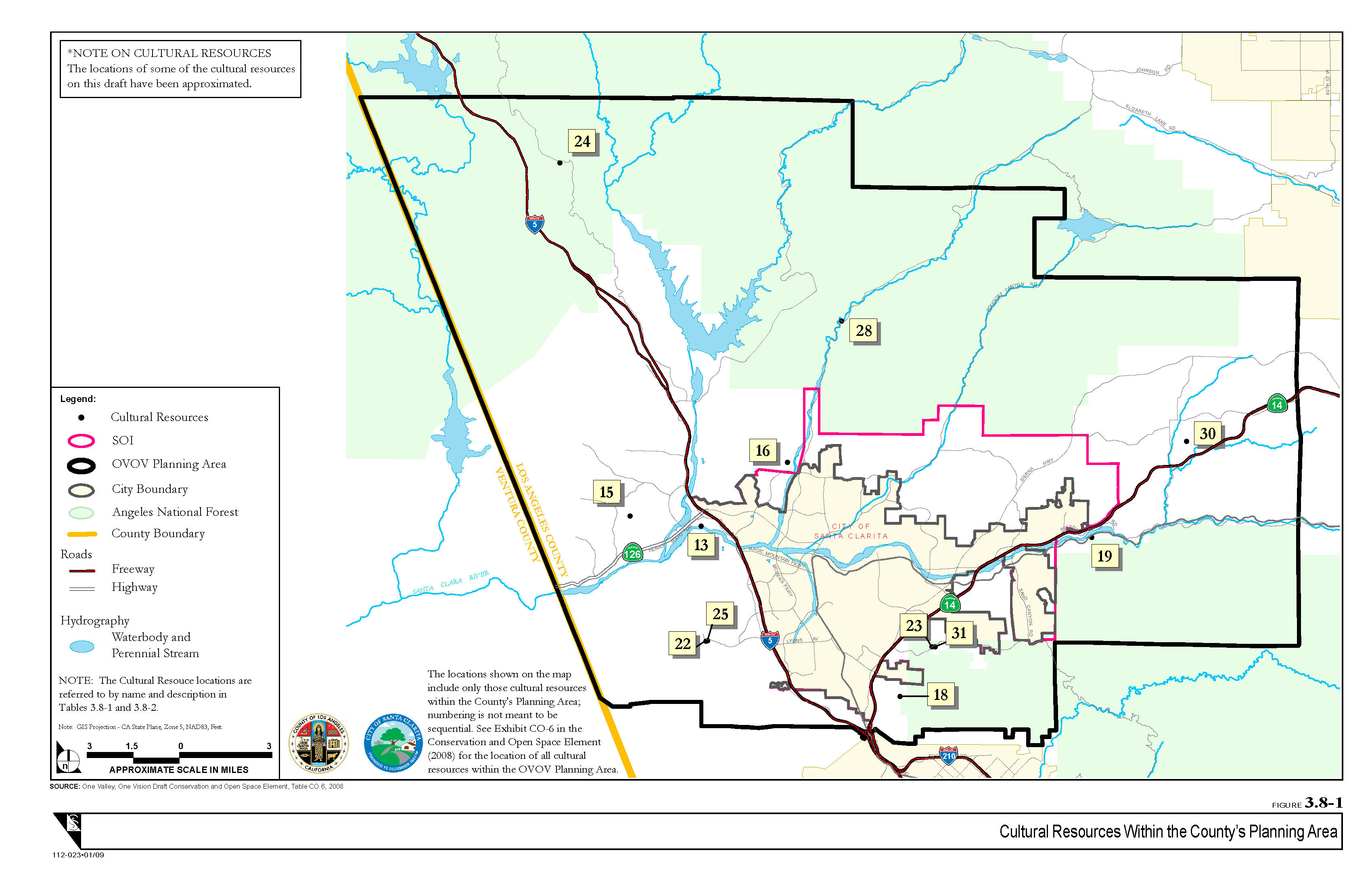Cultural Resources, Santa Clarita Valley.
OVOV City-County General Plan (Final Draft).
Adopted by Los Angeles County Board of Supervisors Feb. 28, 2012.
|
This is the Los Angeles County version of the Cultural Resources section of the "One Valley One Vision" (OVOV) Joint Los Angeles County-City of Santa Clarita General Plan, which serves as a blueprint for future development of the Santa Clarita Valley. The Santa Clarita City Council adopted OVOV June 14, 2011, followed by the County Board of Supervisors on Feb. 28, 2012. OVOV wholly replaces the city's 1991 General Plan and the county's Santa Clarita Valley Area Plan of 1984 as revised in 1990. The environmental impact reports for the project were prepared by Impact Sciences Inc., a Camarillo, Calif.-based environmental consulting firm. Upon its adoption by the Board of Supervisors, Impact Sciences said of OVOV: " Impact Sciences was hired in 2007 to prepare two separate program EIRs for the OVOV General Plan/Area Plan effort for adoption by the City of Santa Clarita and the County of Los Angeles. Each of the OVOV EIRs will be used for other valley-wide projects to tier-off of for future project-specific environmental documentation. The OVOV planning effort seeks to create a Valley of Villages in the Santa Clarita Valley. This planning effort will add about 79,000 additional dwelling units to the Santa Clarita Valley and has a goal to provide two jobs for every housing unit. Another major concept associated with the planning efforts is the idea of a greenbelt surrounding the City and County unincorporated areas. This concept is partially implemented by preserve areas north and southeast of the City in the Angeles National Forest and Los Padres National Forest to the northwest of the City and north of unincorporated Los Angeles County." For historians, the Cultural Resources section of this (and any other) EIR is important because it shows which historical and paleontological resources are "officially known" to the local government agencies and which, by their inclusion, are deemed worthy of a mention, at a minimum, and preservation, at a maximum. It outlines methodologies for dealing with them as development occurs, as well as methodologies for dealing with other resources that may be discovered in the future. One thng the document does not do is guarantee the protection of the listed sites as planning and governing bodies approve development projects in the future, since the document cannot ensure that future decision makers read it to know what's out there, or choose to heed its guidelines. That happens only so long as an interested public remains vigilant.
|



